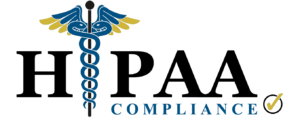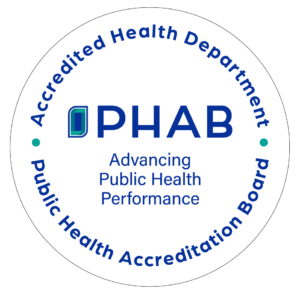Lead Case Administrative Coordination
Location and Phone
2015 Pulaski Highway, Suite D/E
Havre de Grace, MD 21078
410-942-7999
Lead administrative coordination activities funded by the Improved Pregnancy Outcomes grant include education and outreach for prevention, follow–up blood lead level monitoring and mailing out of “Official Notice Packets” for residences of pre-1950 rental properties. Children enrolled in HealthChoice are referred to their MCO for follow-up. The Health Department works closely with the Maryland Department of the Environment and is notified of elevated lead results. Please call 410-273-5626 for further information.
Lead Poisoning FAQs
Anyone can become lead poisoned, although children from six months to six years of age are the main victims. Blood levels tend to peak at approximately 18 months of age due to the normal hand-to-mouth activities seen in toddlers. Sources of adult lead poisoning are generally occupationally related. Pregnant women should be aware that inhaled or ingested lead can be carried across the placental barrier to the fetus. Lead tends to have an accumulative effect and quantities can build over a period of time. Anyone who consumes lead via food or drink, or through inhalation of lead dust, is at risk.
Lead poisoning is usually a silent disease. A child who consumes a dangerous amount of lead may seem to be well. But lead can affect the brain, causing learning disabilities and behavioral problems. Lead can also affect the blood, kidneys, and other parts of the body. As lead poisoning becomes more serious, some children have stomach aches, loss of appetite or loss of interest in play. Some children may also become overly active or fussy and irritable. A venuous blood lead test is the best way to confirm that someone has taken in too much lead. Ask your doctor or clinic about this test.
Lead-based house paint was commonly used in most homes before 1950. Lead was still used in some house paints until 1978. Paint on your window frames and on porches is very likely to present a risk for children. Small children put things in their mouths. They chew on window sills, they eat paint chips, and they suck on their hands. Lead from crumbling paint gets into household dust, and anything that gets dusty (like toys, pets, and fingers) can then become a source of lead poisoning.
Older furniture (cribs, play pens, chairs, etc.) and painted toys may have lead paint.
Old or imported ceramic dishes may be decorated with lead glazes. Food that comes in contact with a lead glaze will pick up some of the lead.
Many children will eat almost anything. Dirt, including soil from flower pots, plaster, ashes, and charcoal, all contain lead.
- Keep children away from peeling paint and broken plaster.
- Damp mop floors and damp wipe surfaces twice a week to reduce lead dust.
- Wash your child's hands and face often, especially before meals, to remove any lead dust or dirt.
- Wash your child's toys often, especially teething toys.
- Use cold tap water - not hot - for infant formula or cooking. Let the cold tap water run for a couple of minutes before using, to flush out any lead that may come from pipes.
- Store food from opened cans in glass or plastic containers (some cans are made with lead solder).
- Use lead-free dishes. Some dishes may have lead in their glazes. If you are unsure whether the dishes have lead, do not use them for eating or cooking. Do not use chipped or cracked dishes to store food or serve food.
- Be careful with your hobbies. Some crafts call for use of paints, glazes, and solder (used in making stained glass) which may contain lead. If you collect miniature figurines, be aware that many are made from lead, and should be kept away from children.
- Do not bring lead home with you from work. People who work in construction, plumbing, painting, auto repair, and certain other jobs can be exposed to lead. You and anyone you live with who is exposed to lead on the job should shower and change into fresh clothes and shoes before coming home. Wash work clothes separately.
- Keep children away from buildings being remodeled or renovated where lead paint and lead dust are common.
- Always test painted surfaces prior to distributing paint or remodeling, or hire an accredited contractor.
Care of Walls, Windows, and Trim - Maryland regulations do not allow dry scraping, sanding or burning of lead paint, because these methods create health hazards. Do replace old windows and wood trim that have deteriorated. Do use only safe methods for removing old paint. Carefully contain and dispose of the hazardous debris and dust from lead paint removal. Call the Maryland Lead Poisoning Prevention Program at 410-631-3859 to learn more about safely removing paint hazards.
Dust Control - In older houses, lead from deteriorated paint can mix with household dust. Special cleaning will lower this hazard. Damp mop floors with a high-phosphate cleaner, such as automatic dishwashing detergent. Mix one tablespoon of detergent with a gallon of hot water. Dust furniture and other surfaces with a damp cloth and high-phosphate cleaner.
Use of Toys, Furniture, and Containers - Older items, such as a crib or toy, which may have been painted with lead paint should be removed from your home. Metal containers, such as pewter or brass pitchers, may contain lead and should not be used for food or beverages. Old or imported ceramic containers or dishes which may have been coated with lead glazes should not be used.
A well-balanced diet contributes to good health in many ways. Foods that are high in calcium, iron, and vitamin C can help protect your children from lead poisoning. Your children should eat less of the foods which are high in fat and oil, since these foods make it easier for the body to absorb lead.
Foods that are High in Iron:
- Liver, kidneys, heart
- Lean meats, eggs
- Beans, peas, lentils
- Prunes, raisins, watermelon
- Spinach and greens
- Enriched cereals (hot or cold)
Foods that are High in Calcium:
- Milk and cheese
- Cottage cheese and yogurt
- Ice milk
Foods that are High in Vitamin C:
- Fruits and fruit juice
- Bell peppers and tomatoes
- Potatoes, sweet potatoes (cooked in their skins)
- Broccoli
Foods that Should be Limited:
- Butter, oil, lard, margarine
- Potato chips, corn chips, French fries
- Fried foods (Remove skin from chicken and fat from meats)
To protect against lead dust, be sure that your children wash their hands before eating. Food that falls on the floor should be thrown away.
Lead can get into food. Sometimes lead can be found in tap water. Some cans have lead in the seams. Certain types of plates, cups, and bowls can contain lead. Lead dust on floors and other surfaces can contaminate food.
- Let tap water run for a couple of minutes before collecting water to make infant formula. Use the cold water tap water only.
- Never heat food in cans.
- Never store food in opened cans.
- Do not use dishes or pottery from other countries if you think they may contain lead.
- Wash your hands before fixing foods, to make sure there is no lead dust on your fingers.
- Wash your child's hands before he/she eats.
- Wash off all bottles, pacifiers, or foods that fall on the floor before giving them back to your child.
Lead paint is found in most homes built before 1950. Lead was used in some house paints until 1978. Old furniture, such as cribs, may also have lead paint. If the lead paint in your home is in poor shape, it needs to be removed, and your home needs new paint. Removing lead paint is dangerous. Hire an accredited contractor who will safely remove the lead paint.
DO NOT remove the old paint yourself. Only trained workers may remove or work with lead paint. Everyone else, including pets, must keep out of the work area until the job is completed and the area is carefully cleaned. Dust and fumes from lead paint removal can be dangerous. For more information on qualified lead removal specialists, call the Maryland Department of the Environment at 410-537-3000.
--------------------------------------------------------------------------------
The only way to know for sure if your children have elevated blood-levels is to have them tested. The Centers for Disease Control and Prevention (CDC) recommends testing every child at 12 months of age and at 24 months. Screening should start at six months if the child is at risk of lead exposure (for example, if the child lives in an older home built before 1950 which has peeling or chipping paint). Decisions about further testing should be based on previous blood-lead test results, and the child's risk of lead exposure. In some states, more frequent lead screening is required by law.
Virtually all children in the U.S. are at risk for lead poisoning. As a result of industrialization, lead is widespread in the environment. Lead is harmful to the developing brain and nervous system of babies and young children.
Children are more likely than adults to be exposed to lead because they have more hand-to-mouth activity than adults and because they absorb more lead than adults. Large numbers of U.S. children continue to have blood-lead levels in the toxic range. It is important for you to know if your child is one of them.
For some children, simple changes in diet and more frequent hand washing are all that is needed. Other children, with very high blood lead levels, may need drugs that help the body get rid of lead. Your doctor will decide what your child needs. But treatment is not enough. The source of the lead will have to be found and the problem corrected. Harford County Health Department can help advise you.


